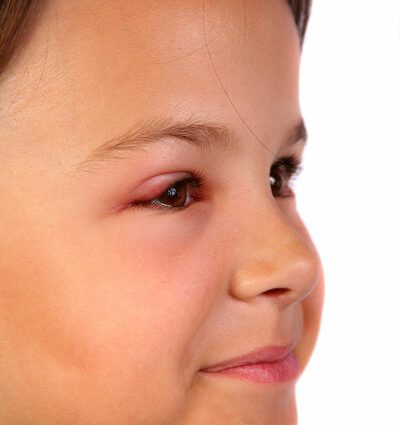Turinys
One morning when our child wakes up, we notice something abnormal in his eye. A small abscess has formed at the root of one of his eyelashes and is causing him pain. He rubs his eyes and it is feared that he will involuntarily pierce what appears to be a stye (also called “oriole friend”!).
What is a stye
“This is a bacterial infection usually caused by staphylococci that have migrated from the skin to the eyelid. The abscess is always located flush with the eyelash and may have a yellow tint due to the purulent fluid it contains. It can also redden if there is a small inflammation ”, specifies Dr. Emmanuelle Rondeleux, pediatrician in Libourne (*). The stye owes its name to its size comparable to that of a barley grain!
The various possible causes of a stye
There are several reasons that can lead to the formation of a stye in young children. Most often it is rubbing the eyes with dirty hands. The child then peddles the bacteria from his fingers to his eyes. This can also happen in people more susceptible to infections, especially small diabetics. If the child has styes repeatedly, you may need to check it up. It is then necessary to talk to your doctor.
Stye: a mild infection
But the stye is a minor infection. It usually goes away on its own after a few days. “You can speed healing by cleaning the eye with physiological saline or antiseptic eye drops like DacryoserumC,” suggests the pediatrician. Be sure to wash your hands before and after caring for your child and avoid touching the stye because the infection is contagious. Finally, do not pierce it above all. The pu will eventually come out on its own and the abscess will subside.
When to consult because of a stye?
If the symptoms persist, worsen or the child has diabetes, it is advisable to consult his doctor. “He may prescribe drops of antibiotics as in the case of conjunctivitis, but in the form of an ointment to be applied to the eyelid. If the eye is red and swollen, it is best to see an ophthalmologist. This may need to add a corticosteroid-based ointment, ”says Dr Emmanuelle Rondeleux. Note: the inflammation generally stops after two or three days with the treatment. And in ten-fifteen days, there is no more trace of the stye. To avoid the risk of recurrence, we encourage our little one to always wash their hands well and not to touch their eyes with dirty fingers, after the square for example!
(*) The site of Dr Emmanuelle Rondeleux:www.monpediatre.net










